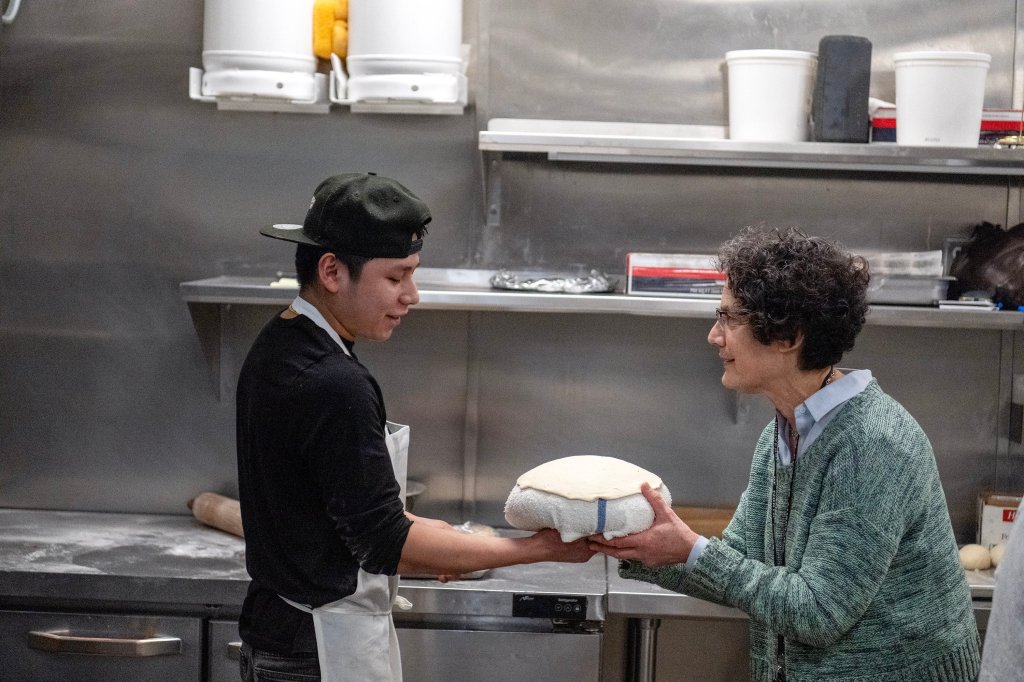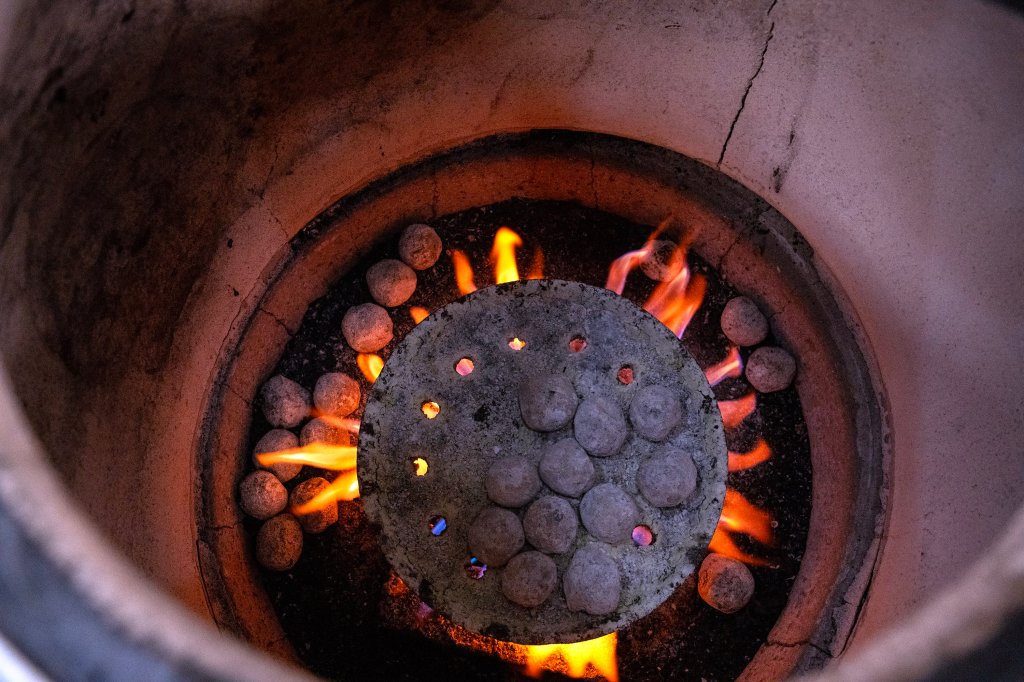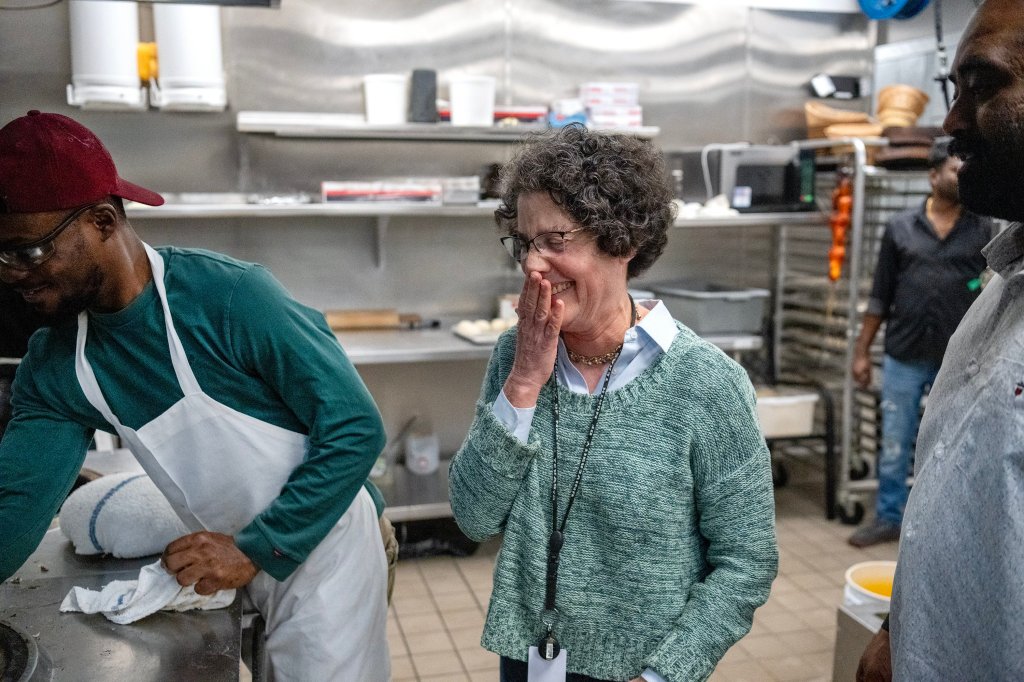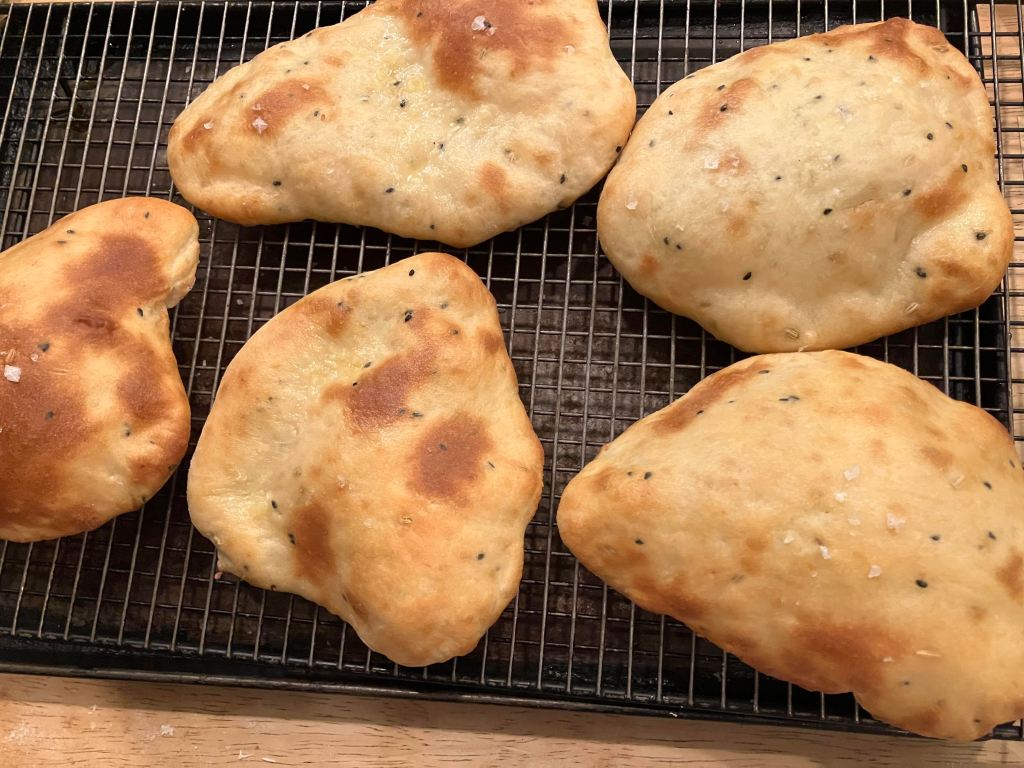
Ever since learning that nobody in India makes naan at home, I have been feeling a little deflated about my own attempts to do so.
It’s restaurant food, I was told several times while researching this story. At home, Indians are likelier to cook other flatbreads such as paratha, poori or chapati. In her childhood in Gujarat, naan was “fancy” food, said my friend Anita Jaisinghani, chef and co-owner of Pondicheri Cafe in Houston, a bread, she elaborated, that she ate just once or twice a year when her family went out to eat.
“I did not know a single soul that made naan at home,” Anita said. “Nobody. Even my rich uncles and aunties didn’t have that.”
It certainly did not feel fancy to me as my house filled with smoke — and I mean FILLED WITH SMOKE — during my first two attempts at making it. I persevered, secure in the knowledge that one of my neighbors is a retired firefighter.
Naan, a soft, blistered Indian flatbread typically eaten warm, is among a dozen items on a culinary bucket list I assigned myself last January. More than any other item on the list, making naan comes nearest to intersecting with my other bucket list, the one that includes items like “climb Mt. Katahdin (while I still can)” and “take a cooking course in India.”
That said, I found out that naan originated elsewhere. I’d considered it a quintessentially Indian bread, but many other cultures in Asia have their own versions, I read. Naan reached the Indian subcontinent with the Mughals in the 16th century from what is modern-day Uzbekistan. The name itself comes from the Persian word for bread.
Regardless, for years, I have been incapable of sitting down at an Indian restaurant without ordering naan before I so much as glance at the menu. What makes it so very delicious, I’d wondered, and could I replicate it at home?

THE REAL McCOY
I decided fine, if naan is restaurant food, I’d go to the source. Sai Guntaka, owner of Taj Indian Cuisine in South Portland, offered to let me watch his cooks. Cooks, plural. He has two full-time employees and two ovens devoted to just two items on the restaurant’s lengthy menu: naan and tandoori chicken.
Both are made in a tandoor, the traditional Indian conical, clay-lined oven that is heated by fire or charcoal and can reach 900 degrees F. “You’ve got to have a proper oven,” Guntaka said. “It’s not like a regular oven you’d put it in — that’s not a real naan.”
The minute I walked into Taj and introduced myself, an employee glanced at me, smiled and said he hoped I didn’t have any arm hair. Once I watched the naan-making operation, I got the joke.
The dough is made each morning starting at 7 a.m.; then the naan are rolled and stretched to order and placed on a towel-lined naan pillow. Here comes the dramatic part: Each time an order comes in, the cooks reach into the scorching-hot oven with practiced ease and slap the pillow against the oven’s side. There the naan sticks, turning golden and blistered faster than I can remember whether the capital of India is Mumbai or New Delhi. The cooks use long sticks to retrieve the baked naans.
Guntaka let me try it myself, three times. The third time was not a charm. All three of my naans failed to stick. All three fell to the oven floor. The arm hair I could spare, but not the arm (no one in the kitchen could locate the long, protective glove that comes with the tandoor).

Commercial ovens like those at Taj cost about $6,000 apiece, Guntaka said, complaining that they frequently break because the clay cracks. (They are in heavy use at Taj, which churns out 400 to 500 naans at Taj on a busy Saturday.) But much like obsessed pizza fans can buy an Ooni countertop oven to attempt the perfect pie at home, home tandoor ovens are now available for $600 to $1,000, an amount that was definitely not in my budget.
ROOKIE ATTEMPTS
Back in my own kitchen, I was feeling daunted by something I’d read on Wikipedia: “During India’s Mughal era in the 1520s, naan was a delicacy that only nobles and royal families enjoyed because of the lengthy process of making leavened bread and because the art of making naan was a revered skill known by few.”

Fortunately, several hundred years later, food celebrity Aarti Sequeira in her “Aarti Paarti: An American Kitchen with An Indian Soul” assured unskilled, working stiff me that I could make naan. Her recipe looked easy, and her method used a cast-iron skillet, which I already own. To cook several at once, I employed my cast-iron griddle instead.
Sequeira’s recipe calls for flour, water, salt, yogurt, yeast and a smidge of baking powder. The yogurt is likely meant to suggest the tang and ferment of sourdough, the wild yeast traditionally used. Making the dough was just a few minutes’ work. The key, Sequeira wrote and Anita affirmed, was to keep it soft, even sticky, by resisting the urge to add extra flour.
“If it’s a hard dough, the bread’s going to be hard,” Anita cautioned me.
The dough rose rose for four hours, then I rolled each naan gently, “flip-flopped” each from dampened hand to dampened hand to stretch and shape it, as Sequeira instructed, set them on the griddle — and nearly burnt the house down.
SUCCESS?

The resulting naan still tasted delicious. I ate one of them standing at the stove with butter dripping down my chin. Really. And okay, I exaggerate: It was all smoke and no fire. But enough smoke that when I attempted to make naan a third time, I switched to Anita’s oven method. “A naan is something you can make at home in the U.S.,” she’d told me. “Everybody has an oven. Everybody’s oven will go up to like 500 degrees, right?”
In her cookbook, “Masala,” she provides a regal-sounding recipe for Royal Naan, the dough flavored and enriched with saffron, cardamom, rosewater and eggs.
I stuck with Sequeira’s recipe for ease and versatility, though, and preheated my oven for an hour to try to mimic the high heat of a tandoor. I set the naan directly on a pizza stone, which I’d also preheated. Just a few minutes later, I had six respectably puffy (too puffy?) naan, and the house was blissfully smoke-free.

SEARCHING FOR ANSWERS
So to return to the start, what makes naan so very delicious? And could I replicate them at home?
To answer the second question first: A qualified yes. I have not yet mastered, or even come close, to the teardrop shape Sequeira was looking for. My homemade naan lacked the char and pleasingly smoky taste that a tandoor would provide, and I struggled to get those attractively irregular bubbles in the bread.
Still, my naan — brushed with ghee, sprinkled with sea salt and eaten warm (“Eat within 30 seconds,” Anita had advised) — were fragrant, pliable and pretty darn tasty. “Real naan” or not, I will definitely be attempting them again.

NAAN
The recipe comes from “Aarti Paarti: An American Kitchen with an Indian Soul” by Aarti Sequeira. She writes that the fennel and kalonji seeds, which are optional, are not traditional but “I love the burst of onion and mild licorice flavor they add.” I wholeheartedly agree. Find kalonji seeds at an Indian grocer’s. I warmed up some of my leftover naan and ate them with hummus; others I used as the base for mini naan pizzas.
1 teaspoon active dry yeast
3/4 cup lukewarm water (about 100 degrees F)
2 teaspoons granulated sugar
2 cups all-purpose flour, plus more as needed for rolling
1 teaspoon fine sea salt
1/8 teaspoon baking powder
1 teaspoon fennel seeds, optional
1 teaspoon kalonji (nigella seeds), optional
2 tablespoons extra-virgin olive oil
3 tablespoons plain yogurt
Melted butter or ghee, for serving
Coarse sea salt, for sprinkling
Dissolve the yeast in the warm water in a large glass with 1 teaspoon of the sugar.
Meanwhile, whisk together the flour, fine sea salt, baking powder, seeds and the 1 teaspoon remaining sugar in a large, deep bowl. Once the yeast is frothy (about 10 minutes), add the oil and yogurt to the glass and stir to combine. Pour the yeast mixture into the dry ingredients and gently mix everything together with a fork.
When the dough has just come together, begin to knead it on a very lightly floured surface. It will feel as if there isn’t enough flour at first, but keep going until it transforms into a soft, slightly sticky and pliable dough. As soon as it comes together, stop kneading. Return the dough to the bowl, and cover the bowl with plastic wrap or a damp tea towel. Let it sit in a warm, draft-free spot for 2 to 4 hours.
When you’re ready to roll, set two bowls on your counter, one with a little extra flour in it and the other with water. The dough will be extremely soft and sticky; this is good! Avoid the temptation to add more flour. Instead separate the dough into six equal portions and lightly roll each ball in the flour bowl to keep them from sticking to one another.
Lightly flour the work surface and a rolling pin. Roll each piece of dough into a teardrop shape, narrower at the top than at the bottom. Each should be 8-9 inches long, 4 inches at its widest point and about 1/4-inch thick. Once you’ve formed the general shape, you can also pick it up by one end and wiggle it; the dough’s own weight will stretch it out a little. Repeat with the rest of the dough.
STOVETOP METHOD: Warm a large cast-iron skillet over high heat until it’s nearly smoking; make sure you have a lid large enough to fit the skillet. Have a bowl of melted butter or ghee at the ready.
Dampen your hands in the bowl of water and pick up one of your shaped naans, flip-flopping it from one hand to the other to lightly dampen it. Gently lay it in the skillet and set a timer for 1 minute. The dough should start to bubble.
After 1 minute, flip the naan. If it has blackened, don’t worry. That’s typical of traditional naan. Cover the skillet and cook 1 minute more.
Remove the naan from the skillet, brush it with butter or ghee, sprinkle it with a little coarse sea salt and place it in a tea towel-lined dish. Repeat with the rest of the naan and serve.
CHEF ANITA JAISINGHANI’S OVEN METHOD: About an hour before you are ready to make the naan, heat your oven as high as it will go, likely 500 or 550 degrees F. Before you heat it, place a pizza stone or large tile inside.
Quickly set the naan on the hot pizza stone or tile for several minutes until they are puffed and golden. There is no need to flip them. Remove the naan from the oven, brush them with butter or ghee, sprinkle them with a little coarse sea salt and serve.

We invite you to add your comments. We encourage a thoughtful exchange of ideas and information on this website. By joining the conversation, you are agreeing to our commenting policy and terms of use. More information is found on our FAQs. You can modify your screen name here.
Comments are managed by our staff during regular business hours Monday through Friday as well as limited hours on Saturday and Sunday. Comments held for moderation outside of those hours may take longer to approve.
Join the Conversation
Please sign into your CentralMaine.com account to participate in conversations below. If you do not have an account, you can register or subscribe. Questions? Please see our FAQs.